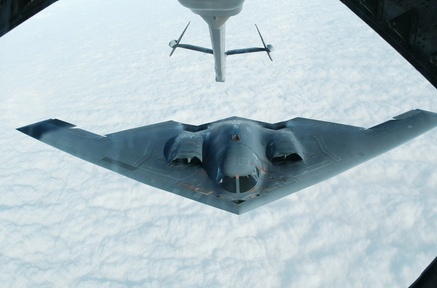WASHINGTON — The Air Force’s new long-range bomber may cost as much as $81 billion for the 100 planes planned, 47 percent more than the $55 billion sticker price the service has listed.
The Air Force based its estimate of $550 million per plane on the value of the dollar in 2010, and it represents only the production costs for an aircraft that won’t be deployed for at least 10 years.
Including research and development, the new bomber would cost as much as $810 million apiece in this year’s dollars, according to calculations by three defense analysts.
The cost of the new bomber will draw close scrutiny in an era of declining defense budgets, as the Pentagon faces $500 billion in reductions over nine years under the budget process called sequestration. The Air Force’s track record also is being questioned after soaring costs for the aging B-2 stealth bomber the new plane would replace and the F-35 fighter jet, the most expensive U.S. weapons system, that’s now being built.
“The Air Force has zero credibility on start-of-program cost estimates unless and until it ponies up real details about the bomber and its acquisition plan,” Winslow Wheeler, a former Government Accountability Office defense analyst now with the Project on Government Oversight in Washington, said in an email.
The B-2 was planned as 132 planes for about $571 million each in 1991 dollars before the first Bush administration cut the fleet to 20 planes in the early 1990s. That resulted in a price of about $2.2 billion per bomber, a fourfold increase, in a program that remained highly classified during its development.
The F-35 program has a current cost of $391.2 billion for 2,443 aircraft, a 68 percent increase from the projection in 2001, as measured in current dollars, for 409 fewer planes than originally planned.
Whatever its ultimate cost, the new bomber would mean billions for the defense contractor chosen to build it. Lockheed Martin Corp. of Bethesda, Md., and Chicago-based Boeing, the No. 1 and No. 2 U.S. defense contractors, said in October that they’ll bid for the project as a team.
They may end up competing against Northrop Grumman Corp. of Falls Church, Va., the prime contractor for the B-2, which hasn’t yet announced an intention to bid.
The Air Force has requested $379 million in funding for development this year, increasing to more than $1 billion in fiscal 2015 and $2.8 billion in fiscal 2018, according to data released by the service.
The Air Force hasn’t provided its rationale for the increased spending.
The Congressional Budget Office said the Air Force plans to request $32.1 billion through 2023.
Send questions/comments to the editors.



Success. Please wait for the page to reload. If the page does not reload within 5 seconds, please refresh the page.
Enter your email and password to access comments.
Hi, to comment on stories you must . This profile is in addition to your subscription and website login.
Already have a commenting profile? .
Invalid username/password.
Please check your email to confirm and complete your registration.
Only subscribers are eligible to post comments. Please subscribe or login first for digital access. Here’s why.
Use the form below to reset your password. When you've submitted your account email, we will send an email with a reset code.